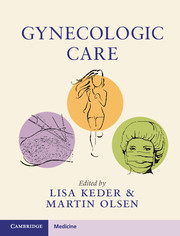Book contents
8 - Hysteroscopy
from Section 2 - Gynecologic Surgery
Published online by Cambridge University Press: 01 February 2018
Summary
Introduction
Hysteroscopy is a minimally invasive approach for evaluating the uterine cavity using an endoscope and a distention medium. It is a valuable investigative tool for managing common gynecological problems like abnormal uterine bleeding and is considered a “gold standard” by some authorities. The birth of hysteroscopy can be traced to the early nineteenth century when Phillip Bozzini first attempted to illuminate the hollow cavities of human body by using conducted light, and Desormeaux presented a workable cytoscope. Pantoleoni performed the first hysteroscopy in 1869, using an improved version of Desormeaux endoscope. Rapidly evolving technology and newer innovations have made hysteroscopy procedure more accurate, safer, and highly effective in diagnosing and treating intrauterine pathologies that in the past may have required major surgical management.
This chapter covers the various equipment, distention media, and surgical techniques required to diagnose and treat several uterine abnormalities.
Scope of Hysteroscopy
Abnormal uterine bleeding in premenopausal and postmenopausal women is a common gynecologic problem that has traditionally been investigated with a blind dilation and curettage. The current trend is to use a combination of ultrasound, office-performed endometrial biopsy and hysteroscopy to improve diagnostic accuracy. Compared to blind dilation and curettage as well as sonography with or without saline infusion, hysteroscopy has been shown to be more reliable and accurate for evaluating endometrial pathology in women with abnormal uterine bleeding with fewer false-positive and false-negative results.
A hysteroscopic “see and treat” approach offers the advantage of a significantly lower incidence of pain, bleeding, intraoperative injuries or postoperative infection, and a rapid recovery time when compared to hysterectomy. It is cost-effective and a huge patient satisfier when performed in an office or an ambulatory care setting. Common indications for the use of hysteroscopy can be found in Box 8.1.
Box 8.1 Indications for Hysteroscopy
Abnormal uterine bleeding in premenopausal women
Postmenopausal bleeding
Unexplained infertility
Recurrent pregnancy loss
Retained foreign body or intrauterine device
Evaluation of uterine cavity prior to global endometrial ablation
Placement of Essure coils for sterilization
Retained products of conception
Indeterminate or equivocal imaging studies including saline infusion sonography or transvaginal ultrasound
- Type
- Chapter
- Information
- Gynecologic Care , pp. 67 - 78Publisher: Cambridge University PressPrint publication year: 2018

